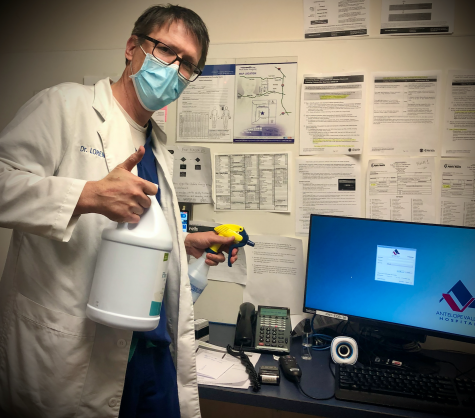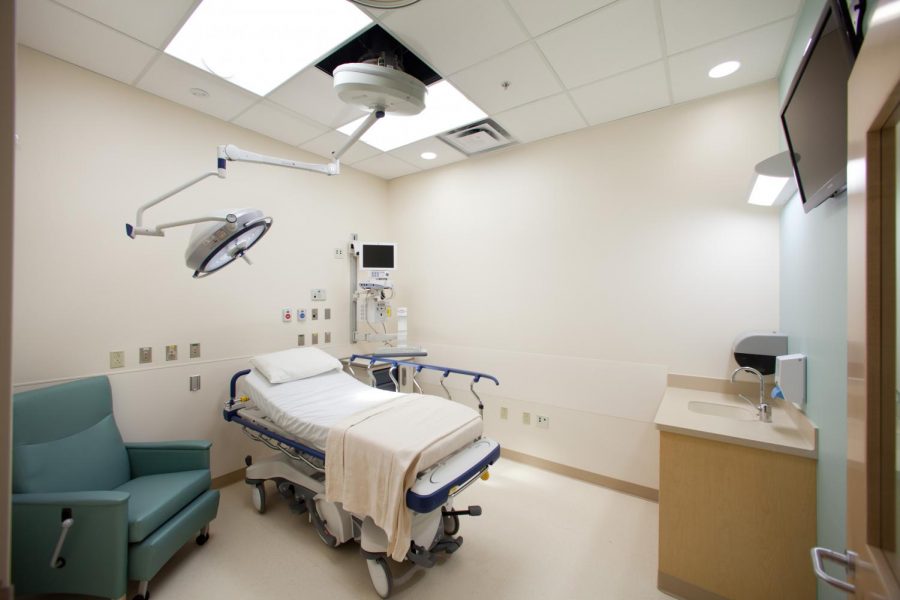Going to the ER During COVID-19 is Not as Scary as you Think
Going to the hospital can be a scary thought, especially during a global pandemic, but Doctor of Emergency Medicine, Loren Rauch, explains how to stay safe and what has changed in the Emergency Department during this time.
September 16, 2020
One would imagine that an emergency room is a coronavirus hotspot, making it virtually impossible to not contract the disease, but according to Dr. Rauch, “once they understood how to take the preventative measures, none of our doctors have gotten sick from coronavirus.”
When someone shows up to the hospital with potential coronavirus symptoms, they are kept in an outside waiting room. The doctors assume that everyone with a respiratory complaint has coronavirus, and people are assigned socially distanced tents in the parking lot where the nurses will swab them for coronavirus and possibly take an outdoors x-ray. If the test comes back positive and the patient is highly symptomatic, they are brought into a room with negative pressure ventilation that creates a constant airflow, ensuring no particles leave the room. The patient rests in this room until treated or transferred to the ICU, where they may put on a ventilator if their symptoms worsen. Unfortunately, family members are not permitted to visit or enter these rooms.
The entire hospital environment has changed drastically since the start of the pandemic. Doctors, nurses, and patients are required to wear masks and social distance throughout the hospital. In addition to masks, doctors wear full gowns, face shields, and at times, use battery-powered air filtered hoods to perform high-risk procedures on coronavirus patients.

In addition to these measures, transmission risk in the emergency room has dropped as the total number of visiting patients has dropped about 25% because people are deferring care to stay at home. Ironically, delaying or avoiding care creates its own risks for adverse health outcomes, including otherwise preventable deaths. For example, some people experiencing heart attacks or strokes that require urgent care wait at home instead of seeking proper emergency care. Additionally, people with symptoms of COVID-19 who actually have another illness such as pneumonia or urinary tract infections may get tested for COVID-19, and fail to seek any treatment when their test is negative, resulting in other complications including more severe illness and preventable deaths.
To prevent these scenarios, Dr. Rauch urges patients to call their doctor or head to the hospital for urgent needs, explaining, “It is safe to go into the ER for non-COVID-19 related illnesses – we are experts at keeping people safe – that’s what we do. However, if in the waiting room people are not socially distancing or wearing masks, then wait outside.”
His biggest advice for keeping yourself and others safe from coronavirus is to “always assume that you are both the only person infected, and the only person uninfected with COVID-19.” This includes regularly washing and sanitizing one’s hands and surfaces, wearing a mask, staying apart from friends and visiting them outside, and even distancing from family members in the house. This way, everyone can return to normal as fast as possible.



Fran Warmerdam • Sep 18, 2020 at 10:00 am
Great, informative article!